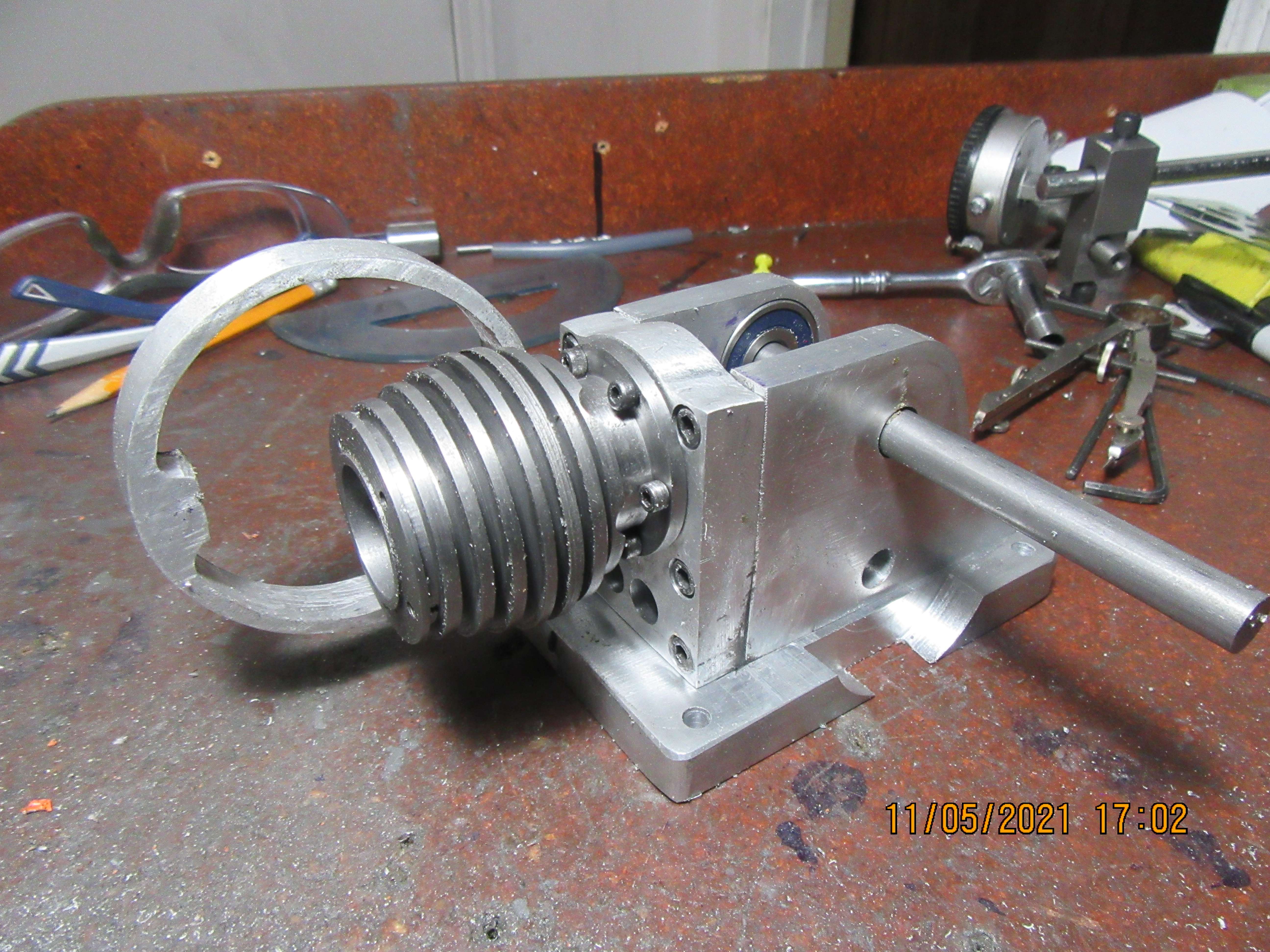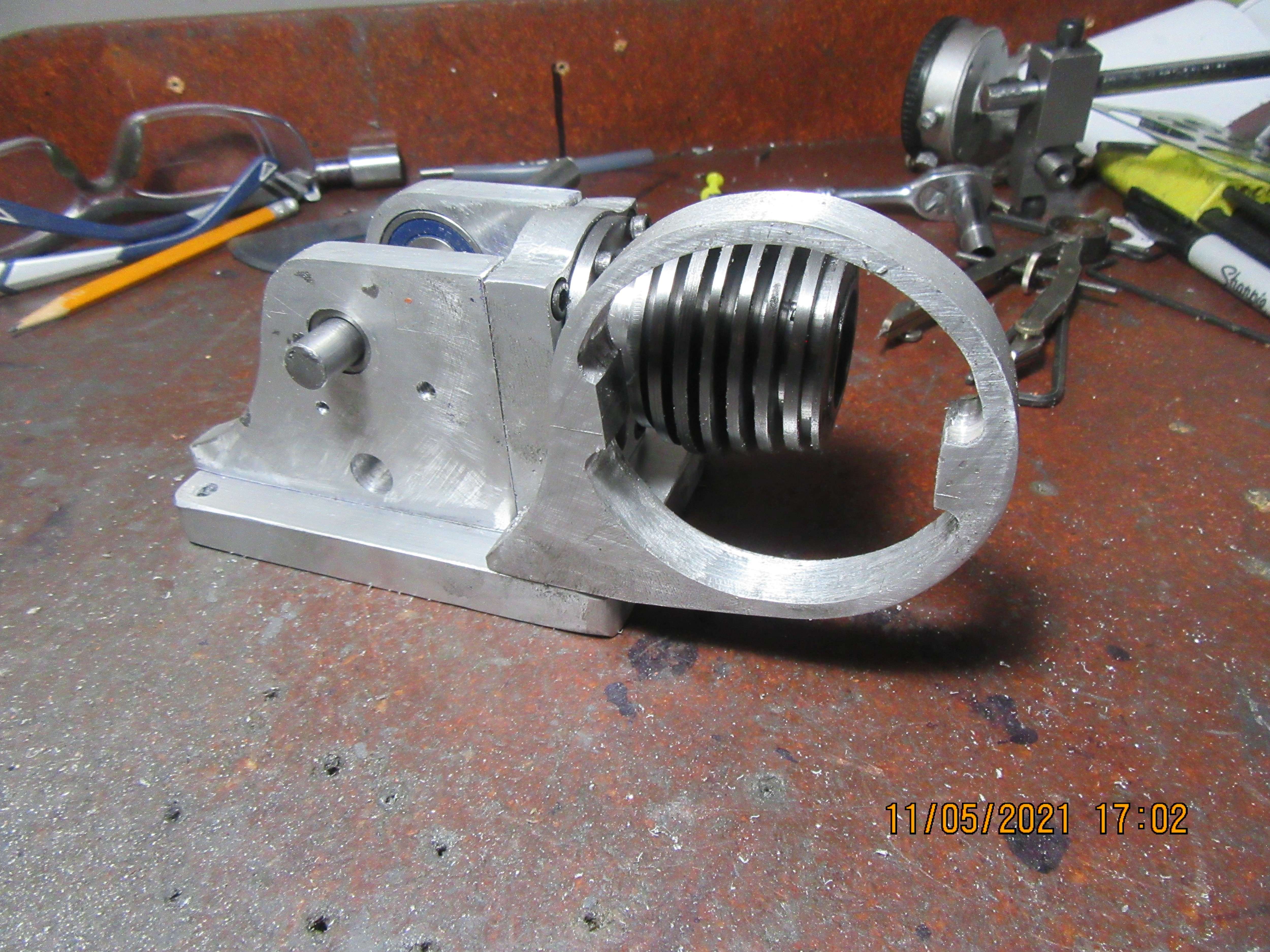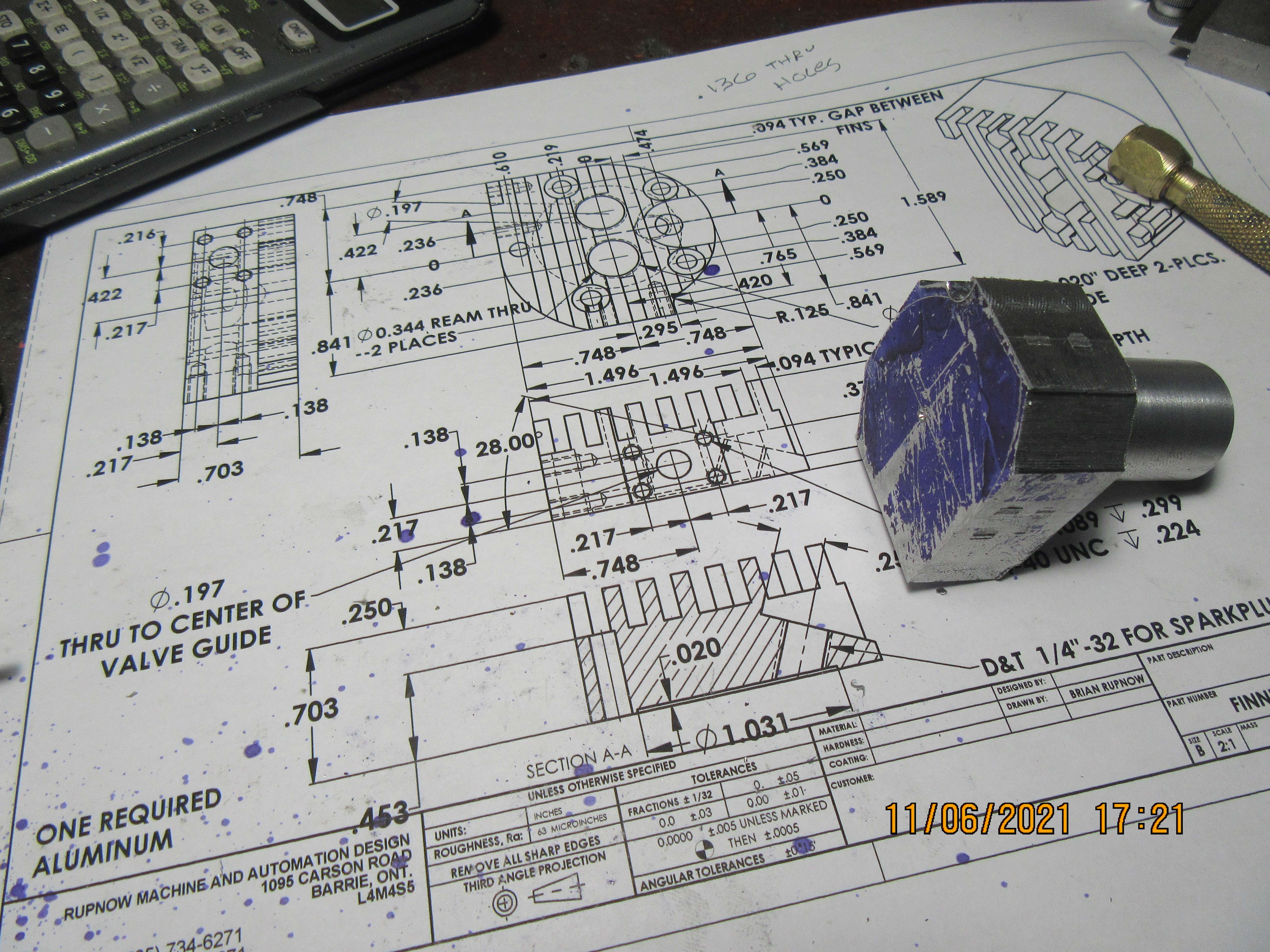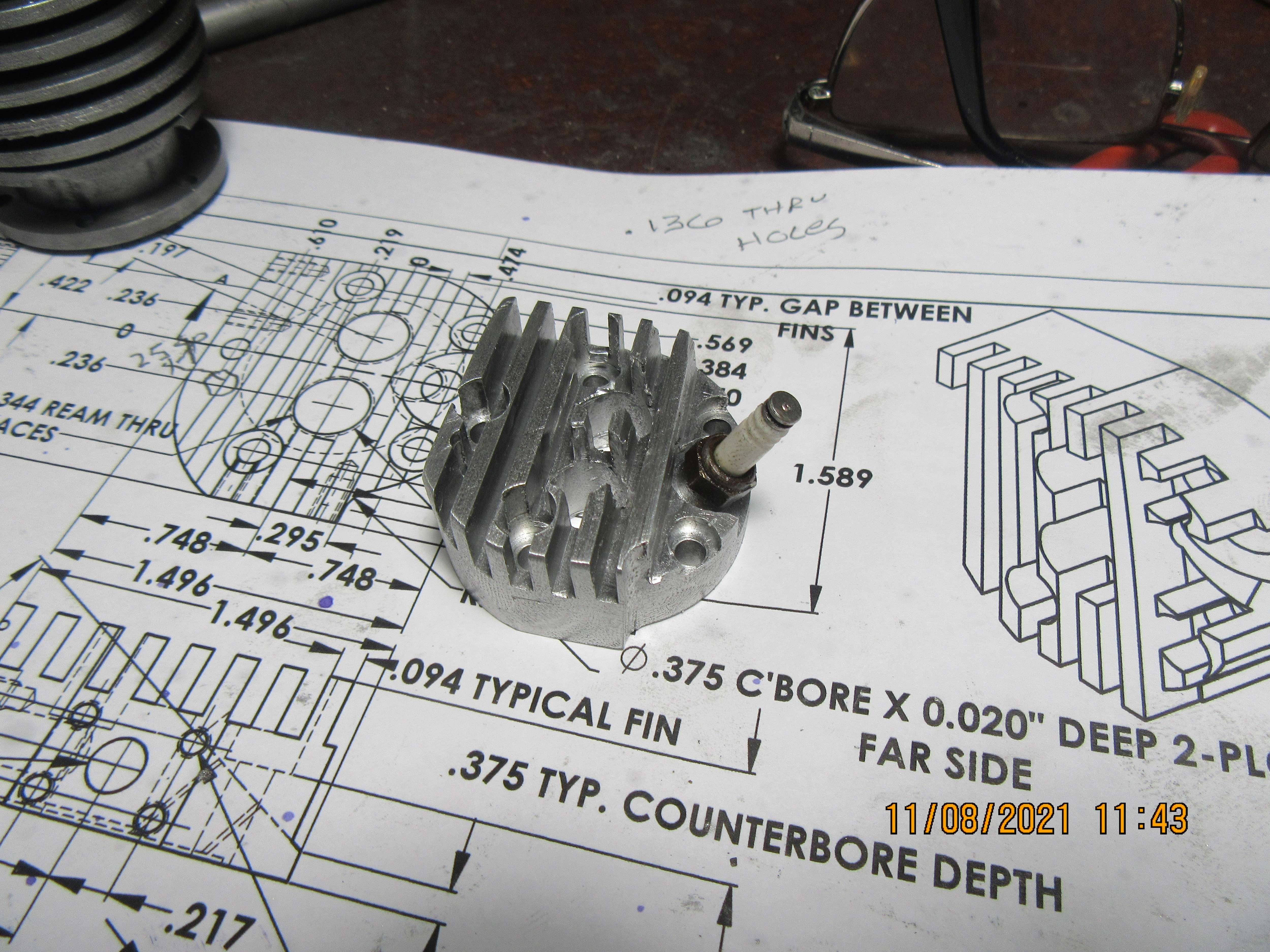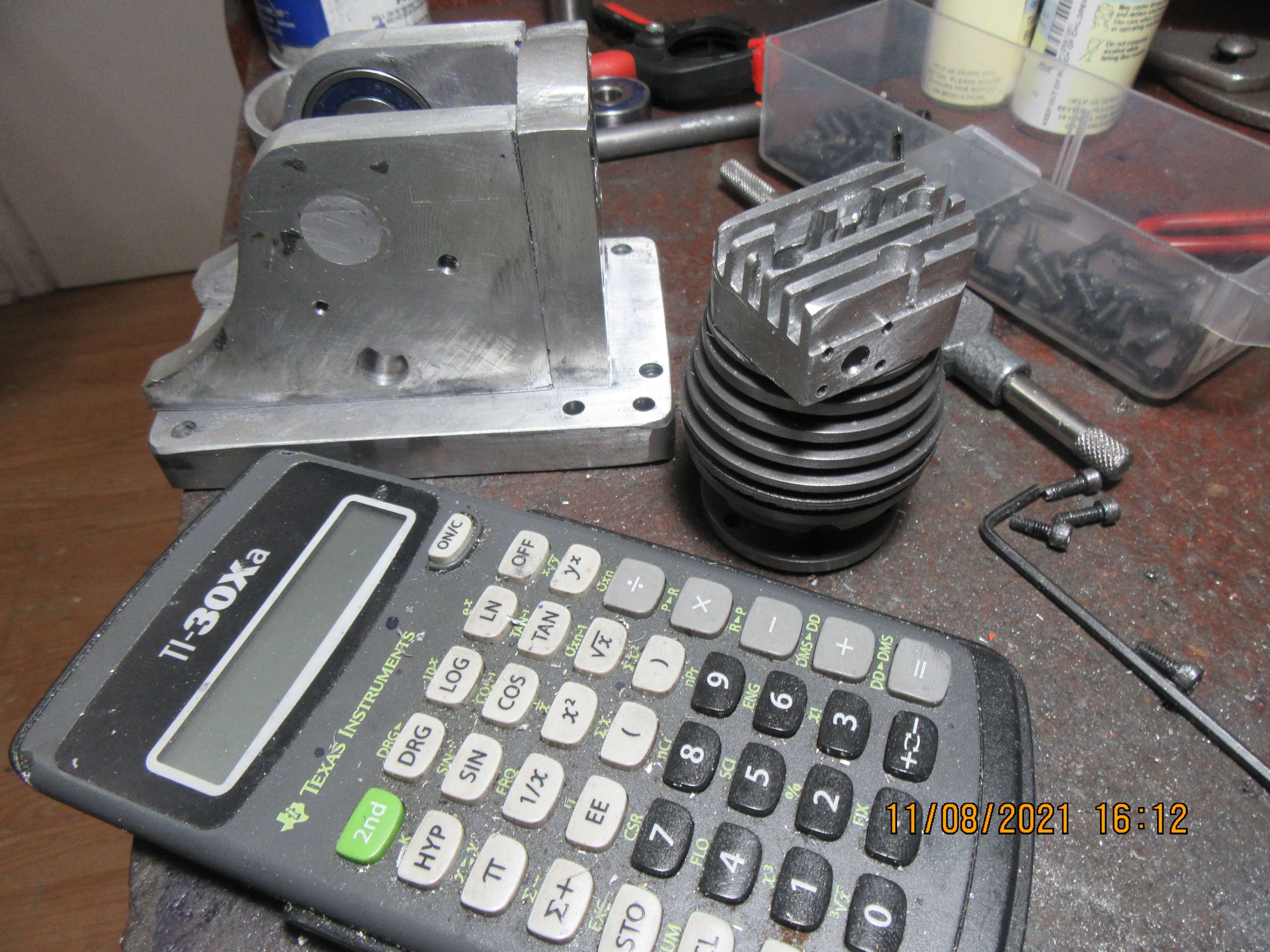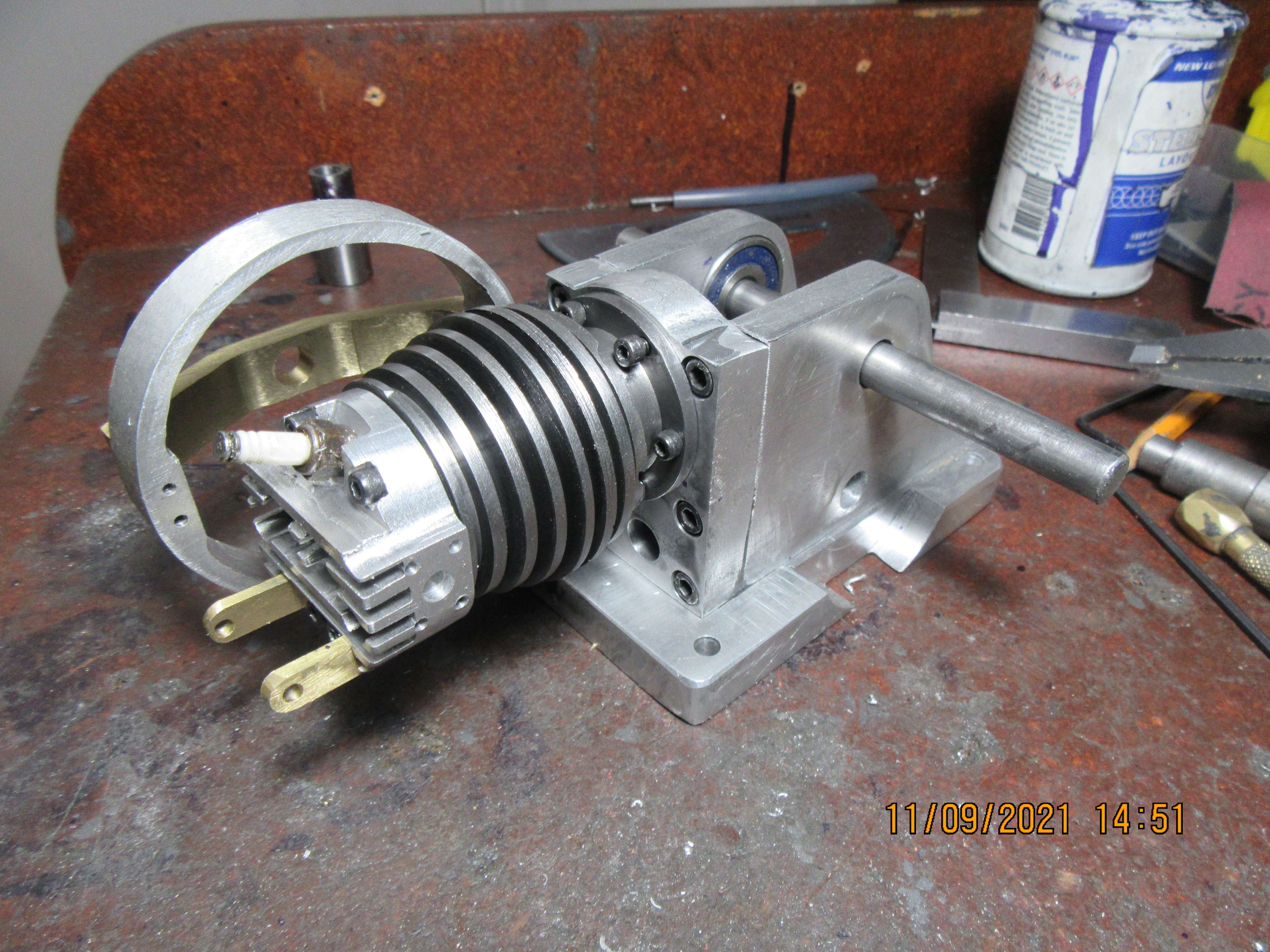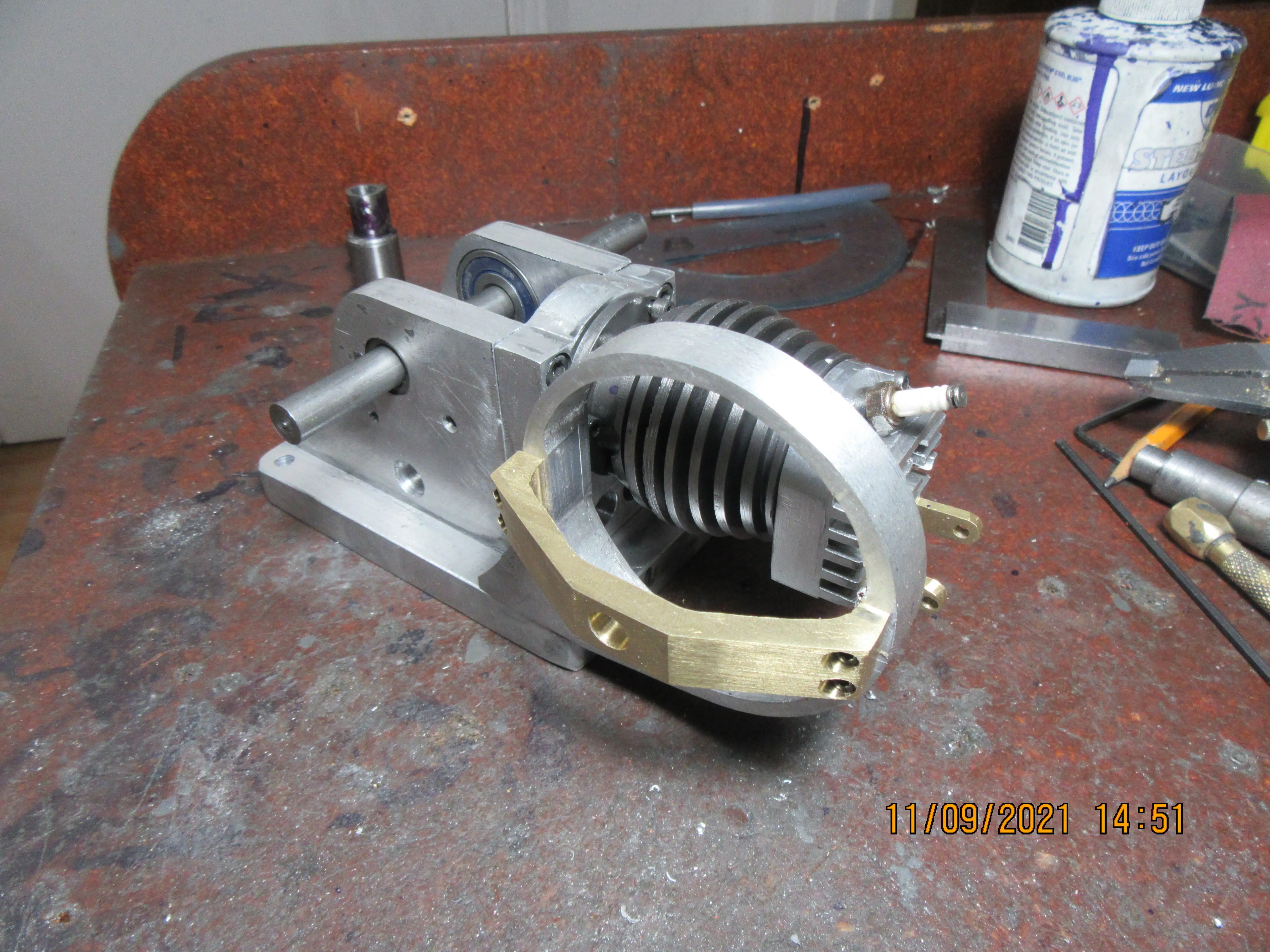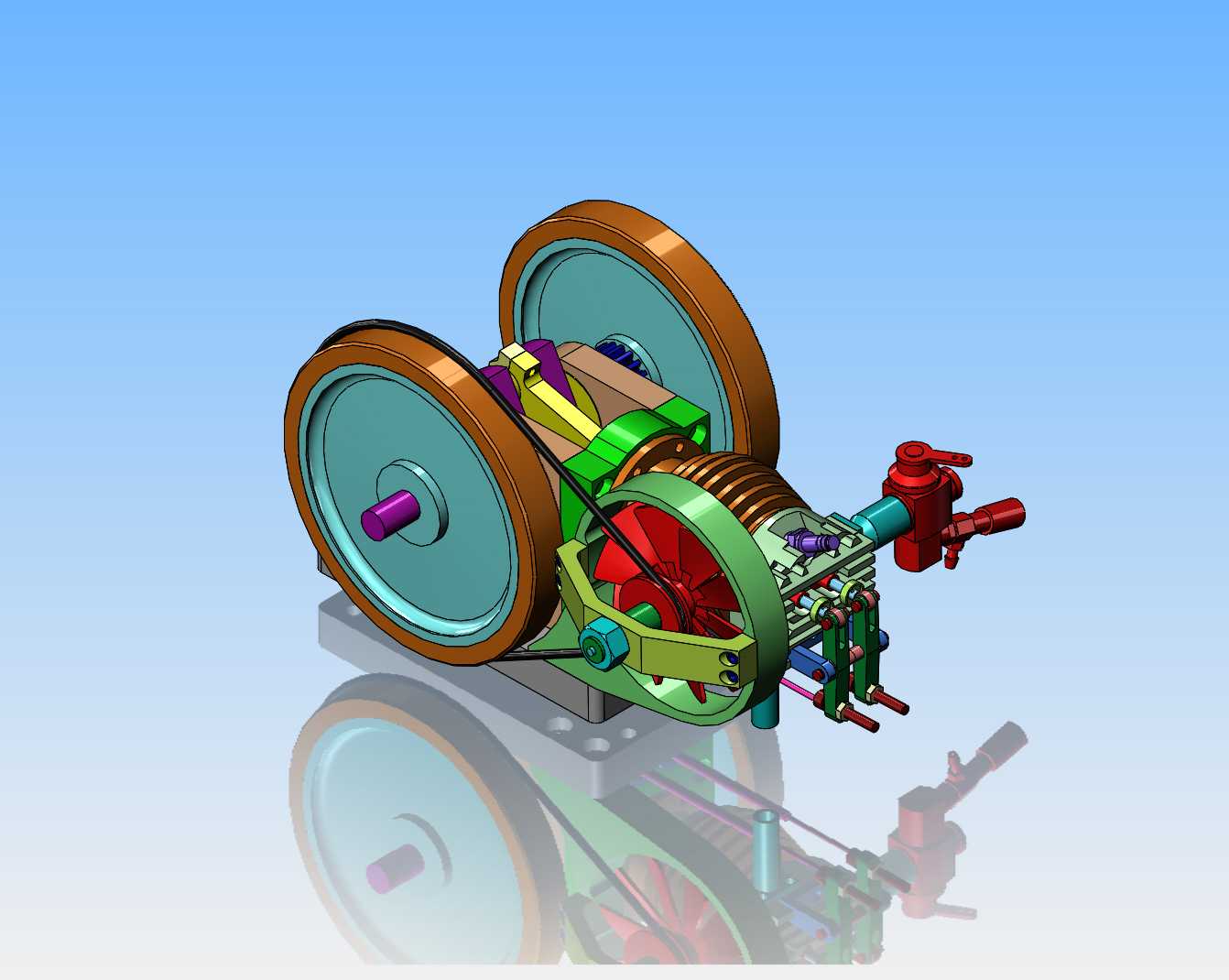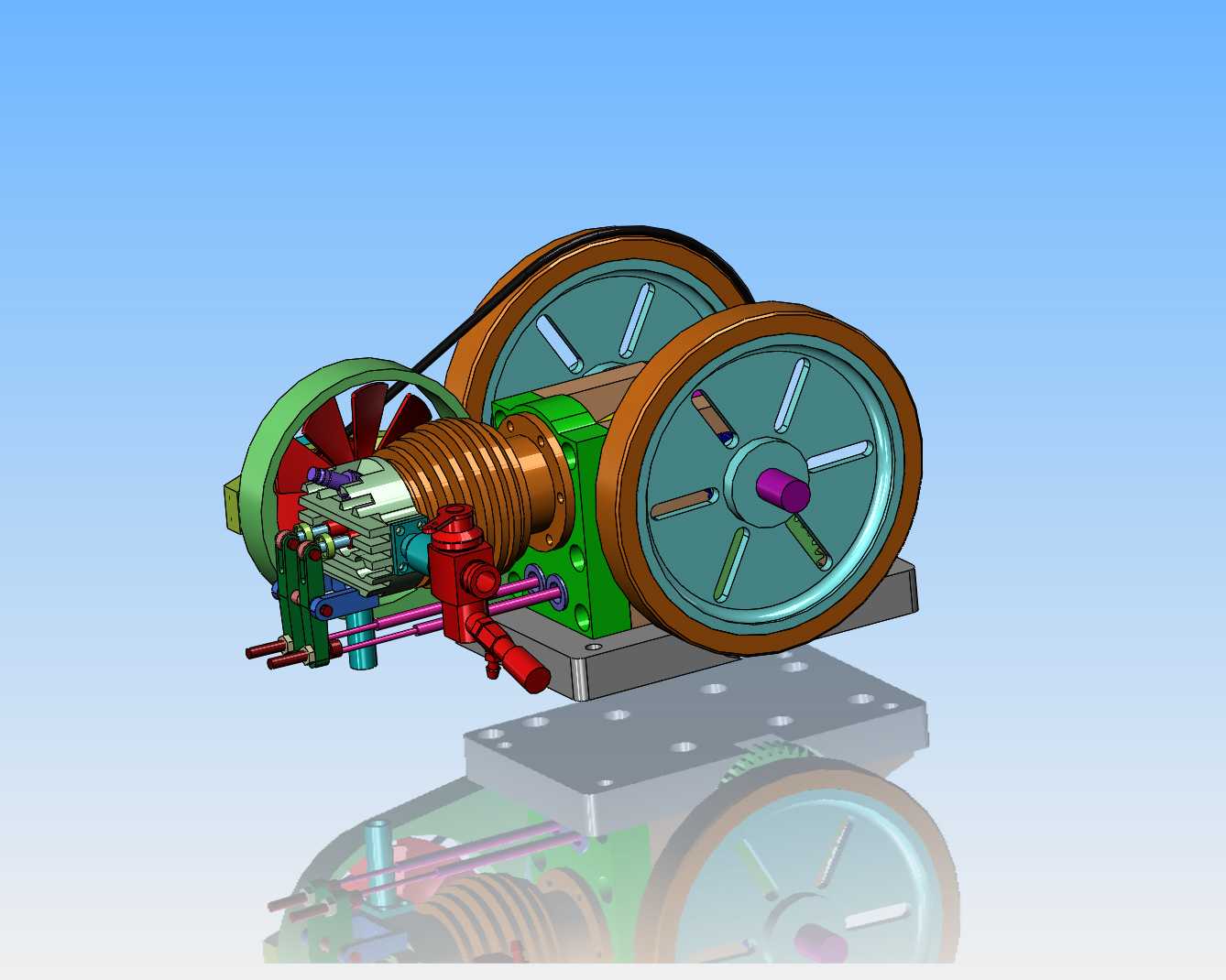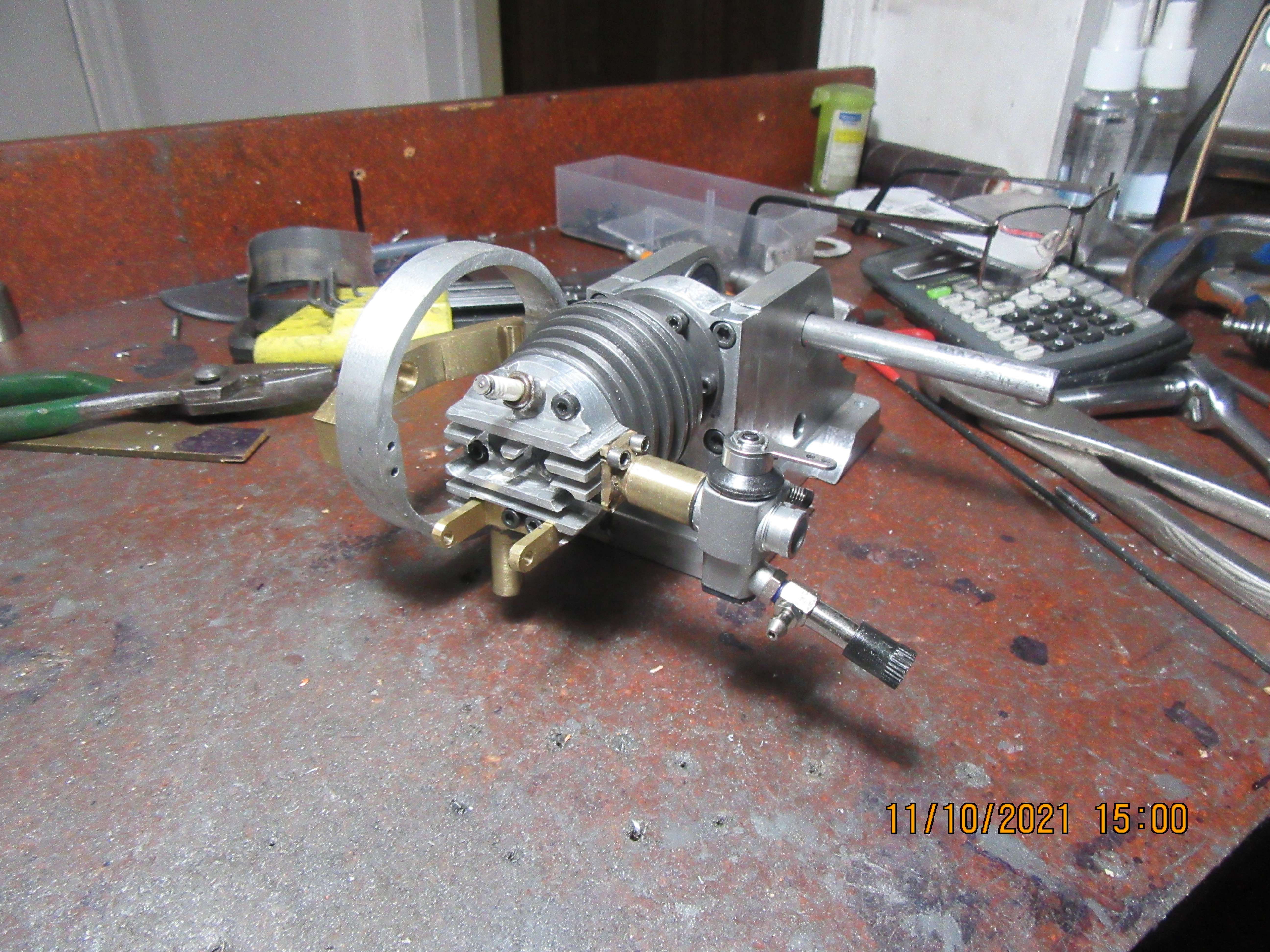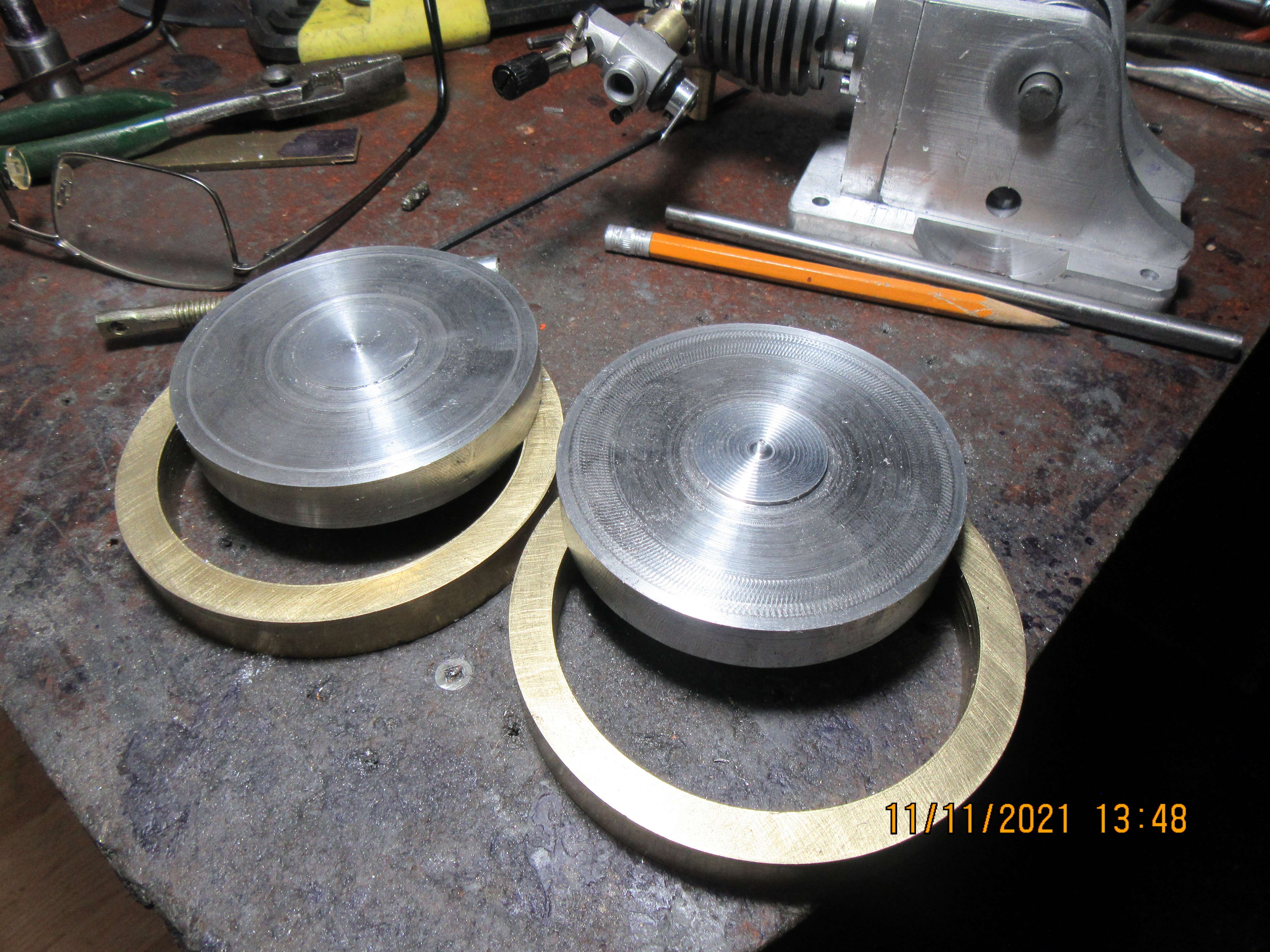Today I drilled clearance holes in the cylinder base flange and drilled and tapped holes in the other end of the cylinder, and attached the cylinder to the frame. I really suffered getting the cylinder bolted to the chassis, and I'm going to change the design drawings of this to give a bit more wrench clearance. I also made the fan housing and installed it. I'm not really sure of how the finished fan and bearings are going to be attached, but for now I will just call it a work in progress.
